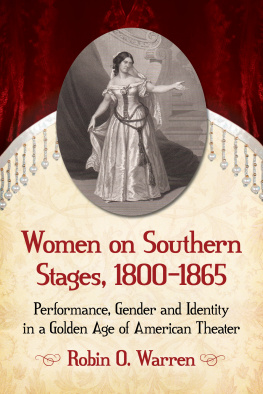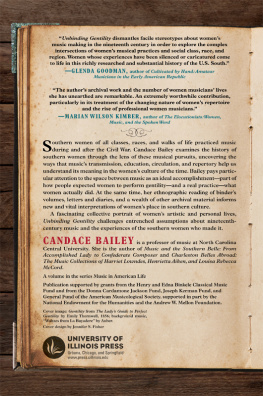Jane Turner Censer - The Reconstruction of White Southern Womanhood, 1865–1895
Here you can read online Jane Turner Censer - The Reconstruction of White Southern Womanhood, 1865–1895 full text of the book (entire story) in english for free. Download pdf and epub, get meaning, cover and reviews about this ebook. City: Baton Rouge, year: 2003, publisher: LSU Press, genre: History / Science. Description of the work, (preface) as well as reviews are available. Best literature library LitArk.com created for fans of good reading and offers a wide selection of genres:
Romance novel
Science fiction
Adventure
Detective
Science
History
Home and family
Prose
Art
Politics
Computer
Non-fiction
Religion
Business
Children
Humor
Choose a favorite category and find really read worthwhile books. Enjoy immersion in the world of imagination, feel the emotions of the characters or learn something new for yourself, make an fascinating discovery.

- Book:The Reconstruction of White Southern Womanhood, 1865–1895
- Author:
- Publisher:LSU Press
- Genre:
- Year:2003
- City:Baton Rouge
- Rating:5 / 5
- Favourites:Add to favourites
- Your mark:
The Reconstruction of White Southern Womanhood, 1865–1895: summary, description and annotation
We offer to read an annotation, description, summary or preface (depends on what the author of the book "The Reconstruction of White Southern Womanhood, 1865–1895" wrote himself). If you haven't found the necessary information about the book — write in the comments, we will try to find it.
This impressively researched book tells the important but little-known story of elite southern white womens successful quest for a measure of self-reliance and independence between antebellum strictures and the restored patriarchy of Jim Crow. Profusely illustrated with the experiences of fascinating women in Virginia and North Carolina, it presents a compelling new chapter in the history of American women and of the South.
As were many ideas, notions of the ideal woman were in flux after the Civil War. While poverty added a harder edge to the search for a good marriage among some southern belles, other privileged white women forged identities that challenged the belle model altogether. Their private and public writings from the 1870s and 1880s suggest a widespread ethic of autonomy. Sometimes that meant increased domestic skills born of the new reality of fewer servants. But women also owned and transmitted property, worked for pay, and even pursued long-term careers. Many found a voice in a plethora of new voluntary organizations, and some southern women attained national celebrity in the literary world, creating strong and capable heroines and mirroring an evolving view toward northern society.
Yet even as elite southern women experimented with their roles, external forces and contradictions within their position were making their unprecedented attitudes and achievements socially untenable. During the 1890s, however, virulent racism and pressures to re-create a mythic South left these women caught between the revived image of the southern belle and the emerging emancipated woman. Just as the memoirs of southern white women have been key to understanding life during the Civil War, the writings of such women unlock the years of dramatic change that followed. Informed by myriad primary documents, Jane Turner Censer immerses us in the world of postwar southern women as they rethought and rebuilt themselves, their families, and their region during a brief but important period of relative freedom.
Jane Turner Censer: author's other books
Who wrote The Reconstruction of White Southern Womanhood, 1865–1895? Find out the surname, the name of the author of the book and a list of all author's works by series.






